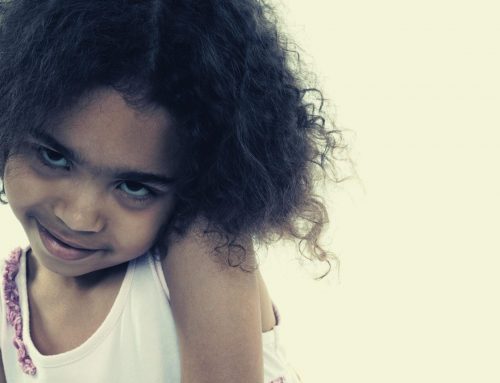Anger – The Why, and What to do about it?
Anger is a normal part of development and a signal that a child is feeling hurt, fearful, disappointed, in pain or vulnerable. When children feel these emotions they will revert back to a fight or flight response, becoming anxious and withdrawn or excessively angry. Physical expression of anger is appropriate when there is a physical threat, and this is often aimed at someone more vulnerable such as a little brother, someone who makes them feel scared such as a school bully, someone who points out their vulnerability, such as a teacher and in many cases anger is directed at themselves or at parents, who are less likely reject them in the long term. Very often, children are able to ‘keep it together’ at school but unravel when they get home, with the smallest thing setting their temper off. Very often, anger is masking a child feeling anxious about something – their school performance, social difficulties, family problems etc. Sometimes a child’s anxiety can be objectively small but feel very big and very real to them. While parents are not usually the cause of a child’s inability to control themselves, there are many things that parents can do to help. If we handle our anger appropriately, we encourage children to express their anger constructively.
Anger Management for Parents
- It is important to communicate to your child that you are able to handle their feelings, no matter how overwhelming they are for him. When your child is angry, it is often an attempt to try and get back in control of his emotions and it is important that you remain calm, firm and avoid things escalating into a power struggle.
- Accepting your child’s anger and remaining calm helps her to develop the skills to calm herself without damaging property or hurting herself or others.
- Acknowledging the feelings underlying the anger will help a child to move on. It is therefore important to allow your child to experience and express his feelings of grief, shame, fear, hurt or disappointment as when he no longer needs to defend against these feelings, his anger will lessen and he will be able to move on. Helping identify the underlying reason for the anger will help your child to recognise the underlying problem so that he does not continuously lose his temper to mask the unexpressed feelings beneath it. Some children experience anger due to the anxiety at times of transition, such as between school and home. Giving them some wind down time and having a routine of de-stressing when they get in from school can help some children cope better with the emotions accumulated during the demanding school day. Occasionally extreme anger at home with good behaviour at school may be due to undiagnosed learning difficulties or a child perceiving that they have difficulties in relation to their peers. We are writing a separate article on this issue.
- Help your child to problem solve and use their feelings of anger to change things so that the situation or feeling won’t be repeated. Understanding what underlies the anger allows the child to reconsider her behaviour so that she gets the consequences that she wants. For example, when a child is angry at his little sister for breaking his toy, he might learn to keep his precious things out of her reach.
Anger Management for Children – Providing Support.
- Stay connected. It is essential that your child feels connected to you and that you accept him regardless of his difficult feelings and undesirable behaviour. Spending predictable special time with him every day (or as often as possible) will help him to feel more able to confide in you about the source of his anger and will also reduce the likelihood of attention seeking behaviour.
- Reflect his feelings. Acknowledge his feelings by saying ‘I can see you really feel sad/ angry about that’ and offer physical or verbal comfort to let him know that you won’t abandon him because of his difficult feelings.
- Stay calm. Getting angry will reinforce a child’s sense of feeling unsafe and out of control. Your anger will make it worse and escalate her behaviour into a likely power struggle. Modelling managing your angry feelings appropriately will go a long way to teach them to do the same. When you convey to your children that you can manage their feelings and that they are safe, they are more likely to internalise this for themselves and over time experience less of a fight or flight response and become more reasonable in their thinking when angry.
- Help your child to feel emotionally safe enough to express her anger and explore the feelings underneath to understand and learn different ways of responding.
- Help your child to understand that all feelings are acceptable, it is only actions or undesirable responses to these feelings that need to be monitored.
- Have boundaries. Allowing and accepting feelings does not mean that associated destructive behaviour is also acceptable. Children who are destructive to property or harmful to themselves or others are communicating that they are feeling out of control. They need limit setting and boundaries which help their anger to feel more contained and in the long term encourages a sense of safety and calm. Reassure children that they can be as angry as they want but can’t lash out at others. Acknowledge their anger and reassure them that you will keep them safe. Allowing them to break things or hurt others will increase their perception of themselves as being a bad person and out of control. Rather be a witness to their anger and try and listen to what they are communicating through their anger.
- Respond with ‘time in’ rather than ‘time out’. Sending your child to time out will be experienced as rejection and they will feel very alone with what are likely to be scary feelings. Rather spend time with your child to help him acknowledge his feelings as acceptable and to find different strategies for dealing with the unacceptable expression of these feelings. Make sure that your child is physically safe at this time and you may need to remove them from a situation to ensure this.
- Provide strategies for managing anger in the moment. There are a number of strategies that you can teach children to manage their anger in the moment. Before doing any of these ensure that your child is safe and not likely to harm themselves. In the moment, they will be in fight/flight mode and will not respond to rational thinking or coaxing. It is best to prepare them for this moment at a time when they are calmer and able to engage with discussing strategies. The first strategy is for them to learn the physical and emotional signs that their anger is escalating. This can be done at a time when they are calm where you explore how to cope with anger. Using cognitive strategies (adjusting their thoughts about the situation, distraction and thought stopping) and physical strategies (such as using relaxation and breathing, a punch bag, scribbling and tearing paper and exercise) can be very helpful in this regard. When your child is calm help them to make a list of strategies that they can use to calm down and leave it in an accessible place, such as on the fridge. Get them involved in writing it, drawing on it and decorating it. For younger children or those very defensive about their angry feelings or behaviour, using social stories may be an effective way of addressing this.
- Prevention is cure. By helping your child to develop their emotional intelligence, you will help them to recognise, label and express their emotions more effectively. This will help them to manage ‘difficult’ feelings such as anxiety and anger. It is important to accept their feelings, even if you think the reasons for them are trivial or difficult for you to handle. Children who express their feelings are less likely to repress them, and therefore less likely to have bouts of extremely unpredictable expression feelings or unpredictable behaviour.
Ten signs that you may need expert advice
- Damage to property
- Threatened or actual physical harm to self or others
- Inability to control aggressive outbursts and hitting others (beyond pre-school years).
- Explosive angry outbursts indicating a spill over of anger
- Oppositional behaviour as a general response
- Inability to acknowledge their role in escalating situations and constantly feels picked on by others.
- High levels of conflict with peers or adults.
- Talks about hating particular people or seems consumed with revenge again others.
- Seems constantly frustrated or expresses anger towards themselves.
- Hurts smaller children or animals.
Children who experience difficulty acknowledging their anger or expressing their angry feelings constructively are often afraid of acknowledging the vulnerability or fear underlying those feelings. While many children go through an angry phase at times of change and when they feel vulnerable, in some instances it may be helpful to have support from someone outside of the family. Therapeutic intervention can help your child work through their fears, hurt and vulnerability to help him to manage his emotions more effectively and allow him to experience, process and adapt to a range of feelings.





